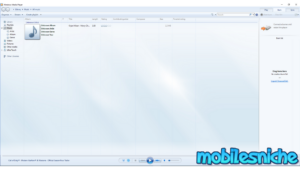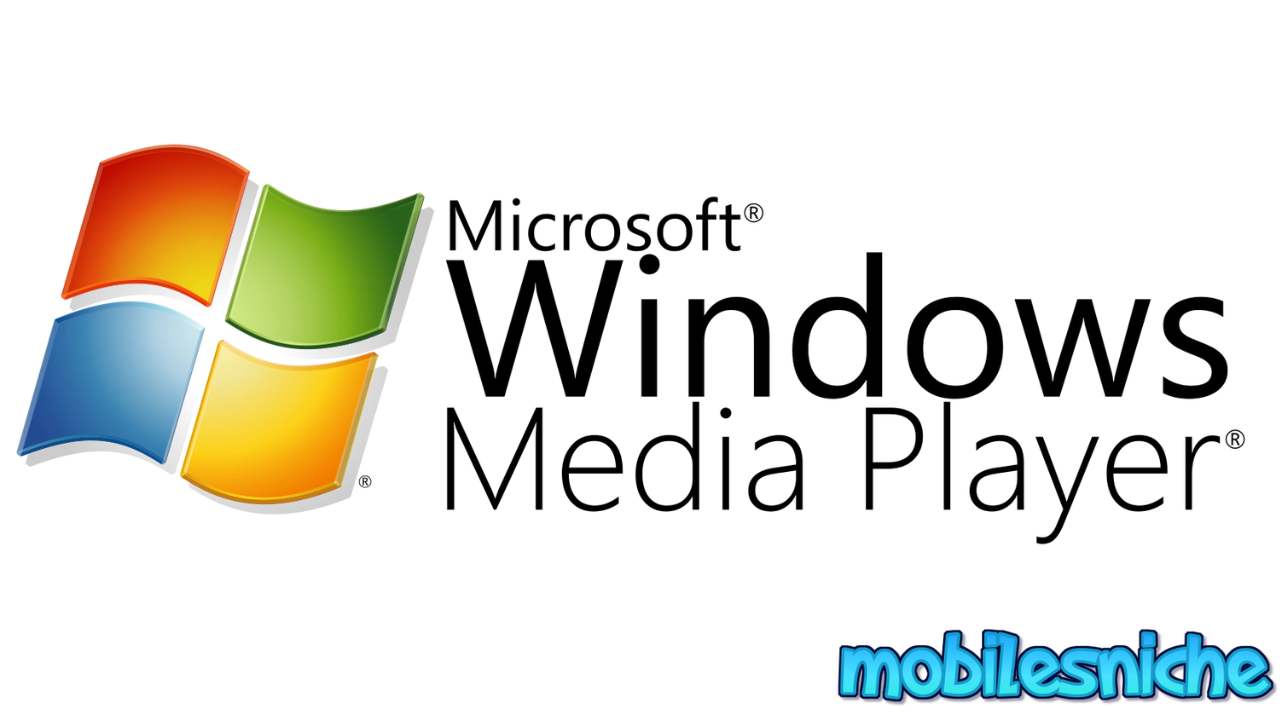Inception and Development:
Windows Media Player has been an integral part of the Windows operating system, tracing back to its initial release alongside Windows 3.0 in October 1991. Originally known as Media Player, it was bundled with Multimedia Extensions, marking the beginning of its journey. Over the years, Windows Media Player has undergone significant evolution with each new Windows version, adapting to the changing technology landscape and user needs. Major updates have brought enhancements in functionality, interface design, codec support, and multimedia playback capabilities, solidifying its position as a go-to media player for Windows users.
Integration with Windows Operating System:
One of the core strengths of Windows Media Player lies in its seamless integration with the Windows operating system. From its inception, Microsoft designed Windows Media Player to work harmoniously with Windows, offering users a native solution for playing a wide range of media formats without the need for third-party software. This tight integration has allowed for a more cohesive user experience, where accessing and managing media files becomes a natural extension of navigating the Windows environment. The deep-rooted connection between Windows Media Player and the operating system has provided users with a familiar and reliable media playback tool that complements their overall computing experience. Windows Media Player’s ability to leverage the inherent features of the Windows platform has contributed to its longevity and popularity among millions of users worldwide.
Key Features of Windows Media Player
Windows Media Player is a versatile multimedia player that offers a range of features to enhance your audio and video experience. Let’s delve into some key features that make Windows Media Player a popular choice among users.
Audio and Video Playback Capabilities:
Windows Media Player supports a wide variety of file formats, allowing you to play your favorite music and videos without compatibility issues. From popular formats like MP3 and WMV to more specialized formats, Windows Media Player has you covered. Additionally, the player offers smooth streaming capabilities, ensuring uninterrupted playback of online content. Users can also customize their playback experience by adjusting settings such as brightness, contrast, saturation, and hue.
Library Management and Organization:
One of the standout features of Windows Media Player is its robust library management tools. Users can easily organize their media libraries, creating playlists to suit their mood or occasion. Whether you want to sort your music by genre, artist, or album, Windows Media Player provides intuitive options for efficient organization. Moreover, the player allows you to sync your media content with various devices, ensuring you can enjoy your favorite music and videos on the go.
Additional Features like CD Ripping and Burning:
Windows Media Player goes beyond basic playback features by offering additional functionalities like CD ripping and burning. With the ability to rip CDs, you can digitize your music collection and create digital copies for convenient access. On the other hand, the CD burning feature allows you to create custom music CDs or backup your audio files with ease. Windows Media Player simplifies the process of managing your music collection and creating personalized compilations.
By combining a user-friendly interface with powerful features, Windows Media Player remains a popular choice for multimedia playback and management. Whether you’re organizing your music library, enjoying online content, or creating custom playlists, Windows Media Player offers a comprehensive solution for all your audio and video needs.
User Experience and Interface Design
Windows Media Player offers an intuitive user experience coupled with a well-thought-out interface design. Let’s delve into the essential aspects that contribute to its usability.
User-Friendly Interface
The interface of Windows Media Player is designed with simplicity and functionality in mind. The layout is clean and organized, making it easy for users to navigate through various features. The main sections, such as the library, playlist, and playback controls, are prominently displayed for quick access.
Navigating within Windows Media Player is a breeze, with clearly labeled buttons and menus that guide users seamlessly through different functions. Whether you are looking to play music, videos, or manage your media library, the interface provides a straightforward pathway to accomplish tasks without any hassle.
Visually, Windows Media Player adopts a modern and sleek aesthetic that aligns with the overall Windows ecosystem. The use of visual cues and color schemes enhances the user experience, making it visually appealing and ensuring that users can easily identify different sections of the player.
Customization Options and Skins
One of the standout features of Windows Media Player is its customization options, including the ability to change skins. Users have the freedom to personalize the look and feel of the player by selecting from a variety of skins available online. These skins alter the visual appearance of the player, allowing users to tailor it to their preferences.
Customizing Windows Media Player with skins can add a touch of personalization and uniqueness to the player interface. Whether users prefer a minimalist design, a vibrant color scheme, or themed skins related to their favorite movies or music artists, the customization options offer a way to make the player reflect individual style and taste.
In conclusion, the user-friendly interface and extensive customization options of Windows Media Player contribute to a pleasant and personalized media playback experience. Whether you are a casual listener or a media enthusiast, the intuitive design and flexibility of the player cater to diverse user preferences.

Performance and Compatibility
When it comes to using Windows Media Player, performance and compatibility are crucial aspects to consider. Let’s delve into how this popular media player performs in terms of resource usage, playback quality, and compatibility with different Windows versions.
Resource Usage and Playback Quality
Windows Media Player’s impact on system resources is quite efficient, as it does not consume excessive CPU or memory, allowing for smooth playback without significant lag or buffering issues. This means you can enjoy your favorite media files without worrying about performance issues bogging down your system.
In terms of playback quality, Windows Media Player supports a wide range of codecs, ensuring compatibility with various audio and video file formats. Whether you’re streaming online content or playing local media files, Windows Media Player delivers a seamless playback experience with good audio and video quality.
Compatibility with Different Windows Versions
Windows Media Player is designed to be compatible with different versions of the Windows operating system. However, it’s essential to note that some older versions of Windows Media Player may not be fully supported on newer Windows releases. For example, Windows 10 64-bit users may encounter compatibility issues with certain features of Windows Media Player.
To ensure optimal compatibility, it’s recommended to check for updates and plugins that may enhance Windows Media Player’s functionality on your specific Windows version. By staying updated with the latest software releases and patches, you can maximize the compatibility and performance of Windows Media Player on your system.
Community and Support
In the vibrant world of Windows Media Player, community and support play a crucial role in enhancing your user experience. Let’s delve into the resources available to you when you need a helping hand or want to connect with like-minded users.
Online Community and Forums
When you find yourself facing a puzzling issue or seeking tips and tricks for maximizing your media player’s potential, the online community and forums are your go-to destinations. Platforms like Microsoft Community Forums provide a space where users can share knowledge, ask questions, and troubleshoot together. Whether it’s unraveling a technical glitch or discovering hidden features, these forums are bustling hubs of activity where users engage in lively discussions.
Here, you can embark on a quest for solutions by browsing through existing threads or take an active role by posting your queries. The beauty of online communities lies in their collaborative nature – you’re not alone in your media player journey. Engage with others, share your experiences, and build connections in this dynamic digital realm.
Official Support Channels
In addition to the vibrant online community, Windows Media Player offers official support channels to ensure you receive timely assistance from the experts. Whether you’re grappling with playback issues, codec problems, or simply seeking guidance on using specific features, the official support channels are a valuable resource at your fingertips.
By tapping into Microsoft’s wealth of knowledge and technical expertise, you can leverage comprehensive guides, troubleshooting steps, and how-to tutorials tailored to address common user queries. From seamless playback solutions to in-depth technical advice, these channels are designed to provide you with the support you need to make the most of your media player experience.
So, the next time you find yourself in need of assistance or want to connect with fellow enthusiasts, remember that the Windows Media Player community and support channels are here to guide you every step of the way. Join the conversation, explore the wealth of resources available, and enhance your media player journey with the power of community collaboration and expert support.
Pros and Cons of Windows Media Player
Whether you’re a music enthusiast or a movie buff, Windows Media Player has been a familiar companion for many Windows users. Let’s take a closer look at the advantages and limitations of using this media player.
Advantages of Using Windows Media Player
- User-Friendly Interface: Windows Media Player offers a simple and intuitive interface, making it easy for users to navigate through their music and video libraries without any hassle.
- Wide Format Support: One of the key strengths of Windows Media Player is its ability to play a wide range of audio and video formats, ensuring compatibility with various media files.
- Organizational Features: The player allows users to organize their media files efficiently, creating playlists, sorting music based on different criteria, and managing a large collection with ease.
- Built-in Visualizations: Windows Media Player comes equipped with visualizations that enhance the listening experience by providing dynamic graphics that sync with the music being played.
- Integration with Windows OS: Being a native application in Windows operating systems, Windows Media Player seamlessly integrates with other Microsoft services, providing a cohesive media experience.
Limitations and Drawbacks
- Limited Customization: Compared to some third-party media players, Windows Media Player may lack advanced customization options and features that cater to specific user preferences.
- Codec Dependency: Users might encounter codec issues when trying to play certain file formats not supported by default, requiring additional codecs to be installed for playback.
- Resource Intensive: Running Windows Media Player along with other applications may sometimes lead to performance issues, as the player can consume a significant amount of system resources.
- Lack of Updates: In recent years, Windows Media Player has seen fewer updates and improvements compared to other media players, potentially limiting its ability to keep up with evolving media standards.
- Competition: With the availability of robust third-party media players like VLC and GOM Player, some users may find that Windows Media Player falls short in terms of advanced features and performance capabilities.
Overall, while Windows Media Player offers a convenient and integrated media playback experience for Windows users, it also comes with certain limitations that users should consider based on their specific media consumption needs and preferences.
Conclusion
In conclusion, the Windows Media Player article and review shed light on the features and functionalities of this long-standing media player. While Windows Media Player has been a staple for many users, it’s essential to acknowledge its limitations in terms of codec support and customization options.
Exploring alternative media players such as VLC Media Player, MPC-HC, and foobar2000 can offer a more versatile and user-friendly experience. These alternatives provide a broader range of supported formats and advanced features that cater to different user preferences.
When considering your media playback needs, don’t hesitate to venture beyond Windows Media Player and explore the diverse options available. By trying out different media players, you can find one that best suits your requirements and enhances your overall multimedia experience. Whether you prioritize codec compatibility, customization, or user interface, there’s a media player out there that can elevate your viewing and listening pleasure.
For more Slot Reviews like this, Visit our Website Here.


